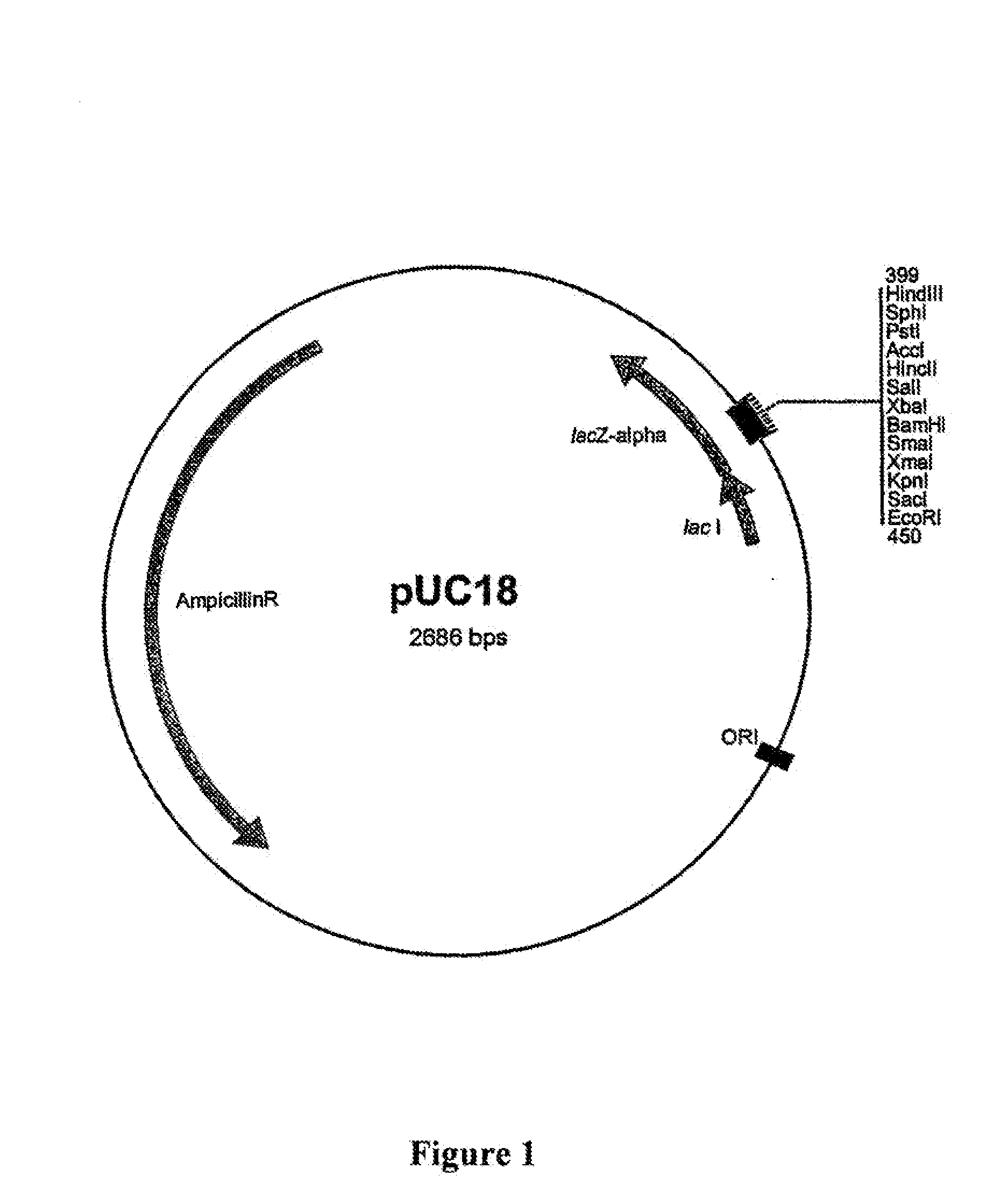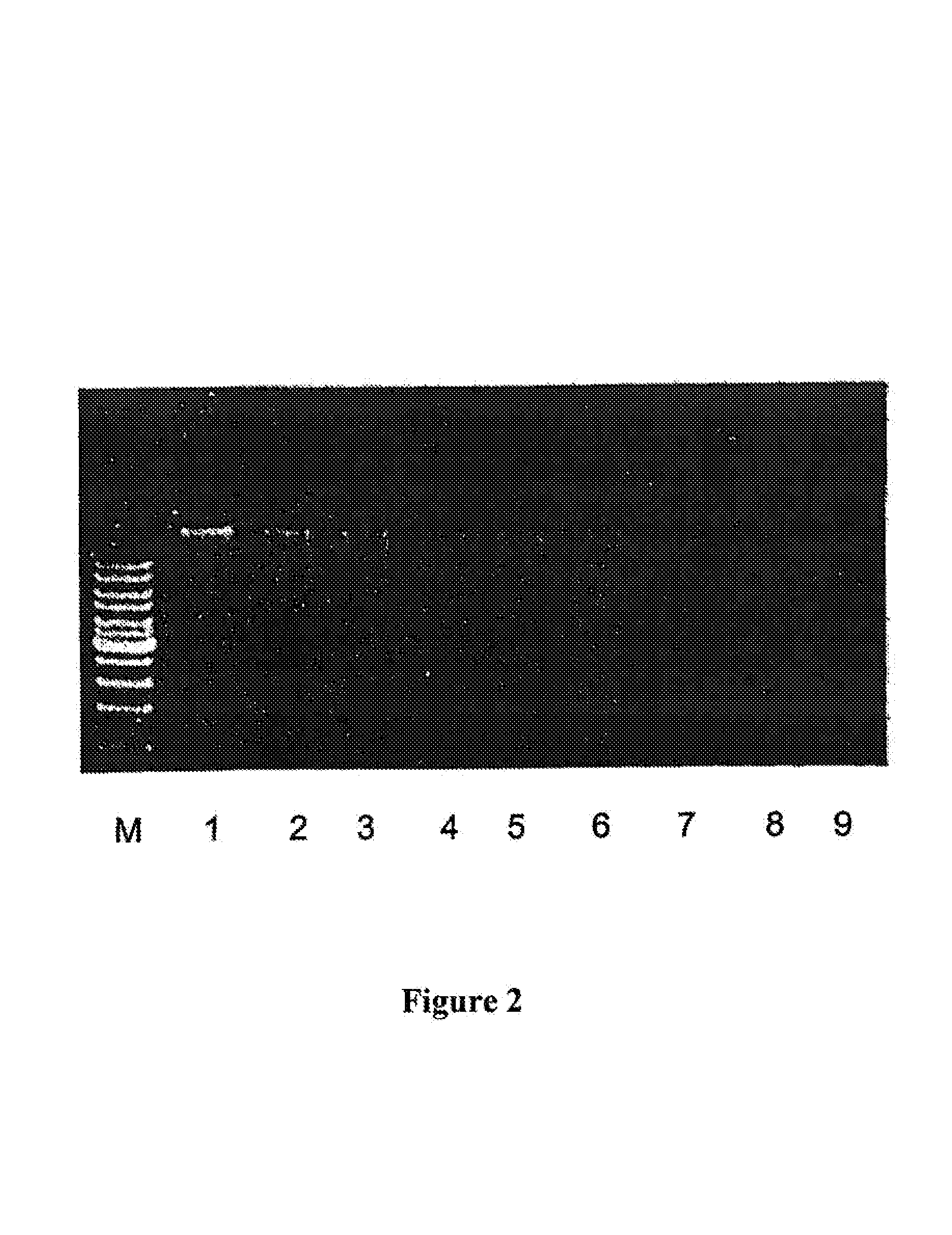Glycosyl hydrolases
a glycosyl hydrolase and glycosyl hydrolase technology, applied in the field of new glycosyl hydrolases, can solve the problems of new enzymes derived from the optimization of known glycosyl hydrolases, amylases are limited in their properties, amylases are not accessible to characterization, etc., and achieve high homology
- Summary
- Abstract
- Description
- Claims
- Application Information
AI Technical Summary
Benefits of technology
Problems solved by technology
Method used
Image
Examples
example 1
Isolation of Metagenomic DNA from Microbial Habitats
[0283]Obtaining Soil Samples
[0284]The soil samples were obtained from various locations in Germany (inter alia) and initially processed mechanically while dry (screening through 4 mm and 1 mm sieves).
[0285]DNA Isolation from Soil
[0286]For DNA preparation, 5 g of soil were slurried by addition of 13.5 ml of extraction buffer (100 mM Tris-HCl, pH 8.0; 100 mM EDTA, pH 8.0; 100 mM sodium phosphate, pH 8.0; 1.5 M NaCl; 1% hexadecyltrimethylammonium bromide). The suspension was shock-frozen 3 times with addition of liquid nitrogen (N2), ground in a mortar and boiled in a microwave. After being transferred into a 50 ml screw-cap vessel and adding 1.5 ml of lysozyme solution (50 mg / ml), the suspension was incubated at 37° C. for 30 min and inverted at intervals of 5 min. Addition of 200 μl of a proteinase K solution (10 mg / ml) was followed by incubation at 37° C. for 30 minutes with inversion as before. This was followed by treatment with ...
example 2
Setting Up the Expression Gene Libraries and Screening for Amylolytic Activity
[0288]Expression cloning in the heterologous host organism Escherischia coli was chosen for the cloning and isolation of complete α-amylase genes from metagenome. Since heterologous recognition of the promoters of unknown donor organisms cannot be assumed in the host organism E. coli, use was made of an E. coli promoter which is inducible in a known manner with IPTG (isopropyl thiogalactoside), the β-galactosidase promoter of the lac operon (lac promoter) on the pUC18 plasmid vector (GenBank NCBI / NIH, Bethesda, Acc.-NO: L08752; FIG. 1). It is thus possible in host strains with a laciq genotype (for example JM109) to induce expression of the genes under the control of this promoter by adding IPTG.
[0289]The E. coli strains JM 109, DH 10B and DH 12S proved to be suitable systems for cloning the metagenome-derived α-amylases and activity-dependent detection thereof. This is because, although they have the peri...
example 3
Characterization of the Metagenomic Pool by PCR
[0299]To estimate the content of gene sequences for glycosyl hydrolases in metagenomic DNA from soil, a DNA amplification was carried out by the polymerase chain. reaction (PCR). This was carried out using HotStar Taq polymerase (from Qiagen, Hilden) and the glycosylhydrolase-specific primers (Table 1). For this purpose, 0.1 μl portions of the metagenomic DNA isolated by the above method were employed in the presence of 200 μM dNTPs (in each case dATP, dTTP, dCTP, dGTP), 20 pmol of each primer of a pair (forward- / reverse), 2.5 U HotStar Taq-polymerase (Qiagen, Hilden) and 1× PCR buffer in a total volume of 50 μl. Fragments of sizes 150 to 300 bp were amplified in the following cycles: 1 cycle at 95° C. for 15 min, 35 cycles at 95° C. for 30 s each, 30 s at 57° C. (GEX036 / 038)or 60° C. (other primer pairs) and 30 s at 72° C.; 1 cycle at 72° C. for 7 min.
[0300]Using the primer pairs GEX024 / 026 and GEX023 / 025, in each case unique PCR produ...
PUM
| Property | Measurement | Unit |
|---|---|---|
| molecular weight | aaaaa | aaaaa |
| temperatures | aaaaa | aaaaa |
| temperatures | aaaaa | aaaaa |
Abstract
Description
Claims
Application Information
 Login to View More
Login to View More - R&D
- Intellectual Property
- Life Sciences
- Materials
- Tech Scout
- Unparalleled Data Quality
- Higher Quality Content
- 60% Fewer Hallucinations
Browse by: Latest US Patents, China's latest patents, Technical Efficacy Thesaurus, Application Domain, Technology Topic, Popular Technical Reports.
© 2025 PatSnap. All rights reserved.Legal|Privacy policy|Modern Slavery Act Transparency Statement|Sitemap|About US| Contact US: help@patsnap.com



